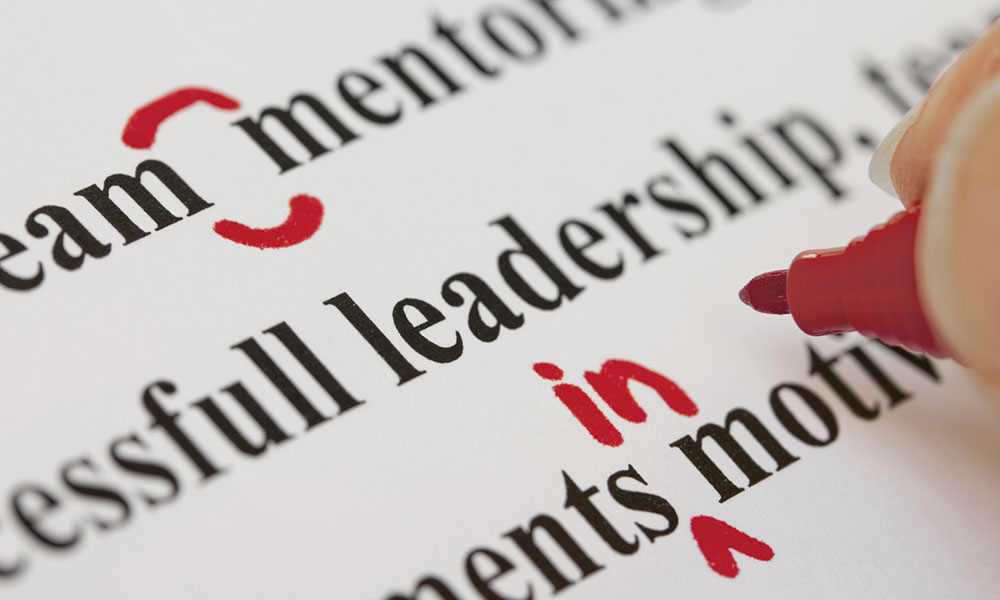
Why Every Meeting Could Use Some Editing
You may hear the word “editing” and think it only applies to writing and communications. But the truth is that every good conference could use a little streamlining and cleanup.
There’s a pretty common saying in the journalism world that I’m sure most of you already are familiar with: “Every writer needs an editor.”
If you pare down the amount of sessions that attendees can select from during timeslots, it means that attendees will have similar experiences.
But after attending The Expo Group’s Xplore mini-conference earlier this week and reading over the notes I took from the panelists’ sessions, I left with a new saying: “Every meeting needs an editor.”
That’s because in a world of information overload, attendees want the clutter removed and different aspects of meetings streamlined in order to have an experience that they feel is not only custom-tailored to them but also easily digestible.
What follows are some ideas I heard from presenters for you to consider if you want to “edit” your meetings to deliver even better experiences for your attendees.
Audience. We all know that gone are the days of promoting your meetings to everyone in the same way. “Don’t stop promoting to the larger group; just follow up with and design for people who matter the most,” said Dave Lutz, managing director of Velvet Chainsaw Consulting.
Lutz suggested segmenting your audiences into different groups, such as lifers (those who volunteer and feel obligated to attend), ambushers (those who are only interested in networking), and professors (speakers and thought leaders). While these groups shouldn’t determine how your meeting and education offerings are designed, this one should: investor participants. These are those attendees “who are your true buyers of education and networking” and “practitioners in your industry.” Another segment that is important is your “window shoppers,” who are currently expo floor only. Lutz said that they are good candidates for nurturing and upselling, as are your “rookies,” if you can figure out who their mentors are.
Sessions. Earlier in the conference, Lutz mentioned the idea of putting education sessions on a diet, something that Maddie Grant, CAE, partner at Culture That Works, brought up as moderator of the closing panel. “If you pare down the amount of sessions that attendees can select from during timeslots, it means that attendees will have similar experiences,” she said. “It creates an opportunity for attendees to connect if they went to the same session. That’s harder to do if there are 18 or 20 sessions happening at the same time.”
Grant also noted the success of holding smaller, follow-up discussions after a large keynote: “It gives people the opportunity to talk about how they can apply what they heard to what they do day to day.” Lutz also noted the need for people to have white space between sessions, so they can digest what they heard and discuss it with fellow attendees in an informal setting.
Marketing tactics. Editing—not just from a grammar and syntax perspective—also is important to your meeting’s marketing strategy. Kimberly Hardcastle-Geddes and Shauna Peters, both of Marketing Design Group, touched on this during their presentation.
The pair had a number of ideas on how to market and promote your meetings to specific audiences you’re looking to attract. For instance, under the topic “old school is new again,” they suggested sending lapsed attendees a “chairman’s guest pass” with a direct invite that would allow them to attend all (or part) of the conference for free.
Another way to market your meeting to specific groups is to curate the audience and make attendees feel special and that they were given a unique opportunity to be in a room with other industry leaders. One way to do this is to handpick the group and then invite them personally to attend, something that The Expo Group did with attendees—myself included—at this conference.
Meeting and tradeshow design. Editing doesn’t end when the marketing and attendee acquisition phase does. It continues onsite, in all aspects of meeting design and layout. “Networking design is starting to and will become an art,” said Lutz.
At the end of the day, we had the opportunity to get a behind-the-scenes tour of the Society for Neuroscience’s annual meeting. Employees from The Expo Group, who designed the meeting, pointed out various aspects of streamlining and things for planners to keep in mind as they make design decisions.
In particular, they shared lots of advice about signage. Signs need to be clear and easy to read, and they shouldn’t clutter up hallways and entryways. In addition, you want to do whatever you can to prevent your event sponsors’ logos from overshadowing your organization’s logo and branding.
Ultimately, your signage and other design elements should help direct attendees and allow for networking but not distract them and take away from their conference experience.
How have you gone about editing and curating various aspects of your meetings and conferences with your attendees in mind? Share in the comments.
(iStock/Thinkstock)






Comments